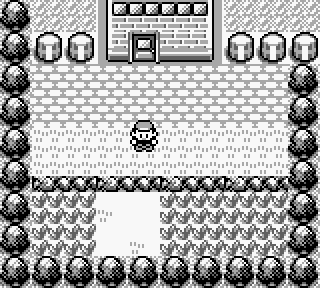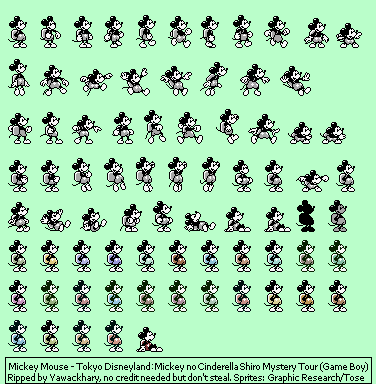I've had the cartridge for
Pokemon Blue in my possession since late last week; bought it off a friend, along with
Pokemon Silver for a very reasonable price, though saving is impossible on Silver as the internal memory battery needs replacing, which renders the playing of it pointless so far. Otherwise I'd have played Silver more than Blue and it'd be this I'd be discussing right now.
So yeah, since Saturday - in between working part-time - I've managed to squeeze in roughly 14 hours.
That's only slightly longer than half a full day, no problem.
Pokemon Blue, and indeed mostly all of the generation leaps have been played at some point - except from the newest
Nintendo DS and
3DS renditions of
Black/White, Black/White 2 and
X/Y.
Thus, this has so far been one helluva nostalgic trip; and playing it through the
Super Nintendo's official Game Boy adapter -
Super Game Boy - has enabled me to play the
Game Boy game on the full 40" Full HD screen. Is there a better use of HD? I think not. Especially when pixels are enlarged to the size of clenched fists, I imagine.
 |
The border surrounding the middle screen is added with the Super Game Boy that's used to display original Game Boy games on the big screen, when inserted into the cartridge slot of a Super Nintendo.
|
After coming home from work on Saturday, getting back for around 10:30pm, picking up the Super Nintendo controller and turning on the console. I think, even though my housemate and our joint friend came over, I played the game, nonstop, lest one or two stops to the fridge, until about 3am.
We were all conversing, while I ploughed on - tirelessly training up my
Pocket Monsters, exploring wildernesses, buildings and nearby Pokemon battles - and it sparked a few moments of realization within me.
I recalled what we'd discussed in our first lesson of the course, and how we personally determine what something is within a game. We used
Space Invaders as an example, and explored how the sprites used in this were - subjectively - determined as a 'tank' or a 'ship'. It was essentially based on what we'd experienced playing the games, personally and subjectively, forming our own narrative within these simple yet thought-provoking worlds.
And as the graphical power at the time - for both Pokemon and Space Invaders - was limited to the technology and hardware they were being created for, it adds to the sense of nostalgia in then determining or justifying what you think an object really is, or can be, just from a sprite or two - and how the limited use of animations, sprites and pixels were used to represent a character, item, creature or environment.
 |
| Individual objects within this scene can be determined by playing, but it's also often personally evident to conjure up your own interpretation of - not what the object is - but how it looks without the restriction of it's image size and pixel-use to you, and how such a small thing can play wonders with the imagination. |
With the example above, I remembered - through playing and exploring the world for the first time, properly, since I was younger - that small, charming additions such as the trees, the blades of grass, the obstructions - of which I assume, but not sure, are concrete pillars - contribute towards a personal connection to the world and environment.
Minimal to today's standards sure - mainly because of the technological limitations of the Game Boy at the time - thus further explorations and releases of the franchises - as with most sequels and updates of games - strive to implement more graphical power, and thus, easily recognizable objects, trees and characters/creatures.
Of course, that's easier to suggest as technology has improved so much that it's simpler to have a realistic looking tree - at a specific size, and with a specific amount of sprites or polys - than it was back then.
And this leads me to recent video games, mostly independently released, through individual companies or teams, that appear to recently set the graphical presentation to the levels of games like the original Pokemon titles -
Blue/Red/Yellow/Gold/Silver/Crystal - and provide old-school presentations, with elements that provoke throwbacks and nods to these technical marvels of days past.
Games such as, essentially, the entire selection from my previous post - albeit, some more than overs, in graphical representation; pixels/sprites - provide great influence in the way the game looks and the animation plays out - as intentionally basic as it may first appear.
With games like Home, the main character's animation is essentially a few frames strong, and as such has a quirky, charming approach to his walking. This choice, I feel, gives the player a sense of their own personal ownership of that character's movement, and how it impacts the player to the point that - in some cases - some animation can be so obscure, even if only walking, or jumping, or crouching, that it can generate a laugh, or a comment.
 |
| The crouching animation here for example - top right corner - appears to only be one frame, yet it's easily justifiable as to what Mickey Mouse is doing within that frame. The sprites are highly charming, in that they represent the classic Disney mascot in very limited frames. This reminds me of recent indie games, such as the ones in my previous post, and how they reflect these by intentionally taking the pixellated route as the style for their game, and give the impression that the game's from the Nintendo Entertainment System/NES, yet modified and released for the appeal of recent years. |
It's almost as though the use of pixels within a game is an artistic direction, rather than a technological restriction, and games like
Sword and Sworcery thrive on the artistic representation of a very modernized video game.



